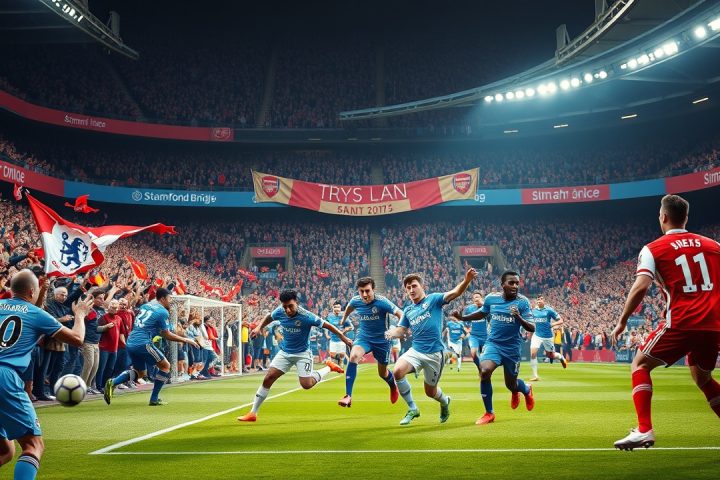FIFA Club World Cup: A Celebration of South American Soccer
As the FIFA Club World Cup unfolds in the United States, the exuberance of South American soccer fans is undeniable. Boca Juniors enthusiasts are celebrating on Miami’s sandy shores, while Palmeiras supporters light up Times Square with their fervor. The presence of River Plate fans singing passionately in Seattle and Flamengo fans roaring during player introductions highlights a festival-like atmosphere that showcases the fervent spirit of CONMEBOL teams.
Strong Tournament Performance
All six participating South American clubs, including Fluminense and Botafogo, have made a strong start in the tournament, accumulating three wins and three draws among them. This demonstrates not just their competitive edge but also their cultural impact, as their captivatingly loyal fanbases have outshone many of their UEFA counterparts who often seem indifferent to the tournament’s expanded format.
Historical Significance
Historically, the FIFA Club World Cup serves as a connection to a storied past for South American teams. From Palmeiras claiming victory in the inaugural Copa Rio against European clubs in 1951 to Flamengo defeating Liverpool in the 1981 Intercontinental Cup, these achievements resonate deeply within the regional psyche. Such historical feats are cherished moments, underscoring a tradition of football excellence in South America.
Paulo Roberto, leading the Palmeiras supporters’ chapter in the U.S., relayed to ESPN how the triumph of 1951 positively uplifted Brazilian spirits after the national team’s World Cup loss. “Those trophies define our identity and our pride as fans—they’re a cornerstone of our history that remains relevant today,” he expressed.
Challenges and Opportunities
River Plate Secretary Stefano Di Carlo also emphasized the importance of this global platform, stating their participation reaffirms River Plate’s position as a prominent representative in South America. Yet, the club’s ambition faces a challenging reality: the last eleven editions of the tournament were dominated by European teams, casting a shadow of uncertainty over South American hopes for this year’s title.
Economic pressures compel many clubs to sell star players to European teams, forcing South American clubs to rebuild consistently, facing the challenge of showcasing their talent on a global stage despite the loss of key figures. Juan Pablo Pacheco from River Plate Texas commented on this dilemma, lamenting the departure of players who achieve stardom outside their homeland.
Vibrant Rivalries and Community Bonds
The recent matches have showcased this vibrant rivalry; for instance, Boca Juniors had a hard-fought battle that ended in a 2-2 draw against Benfica. Di María’s performance was notable, clarification of his gestures post-match indicated a personal connection, highlighting the intertwined relationship between footballers and their roots.
The essence of family bonds reflects how deep-rooted the tournament is for South American communities. Flamengo fan Renato Silva shared his pride as a supporter across three generations, highlighting the significance of coming together in discussions surrounding the tournament.
Global Engagement
Interestingly, the South American teams’ enthusiasm for the Club World Cup can also be attributed to the large diaspora of supporters residing in the U.S. Many fans cherish these encounters, witnessing their teams compete in a new setting that feels like a homecoming, uniting fans from diverse backgrounds.
Mariano Bossana from the Boca Juniors Consulate in Washington, D.C., expressed how the proximity of the matches ignites pride and nostalgia. The tournament offers these clubs, which often struggle with market reach compared to more established European giants, an invaluable opportunity to amplify their brand and connect with a broader audience.
Building Community and Digital Presence
Botafogo is attempting to leverage this moment by creating local fan engagement spaces like “Botafogo House” at Venice Beach, aiming to cultivate a community among supporters. Meanwhile, River Plate is making strides in its digital presence, establishing English-language social media channels to engage with international fans effectively.
River Plate’s Di Carlo articulated that their journey is focused on growth at all levels, aiming to solidify the club’s international stature while utilizing the Club World Cup as a stepping stone rather than a conclusion.
Conclusion
Ultimately, while the prospect of winning remains a substantial motivation, the unique blend of history, fan engagement, and economic potential fuels the ambition of these teams, who revel in seizing the moment on a global radar. The South American football tapestry intricately weaves emotion, heritage, and a competitive spirit, making their participation in the Club World Cup not merely a quest for victory but a celebration of cultural identity.




